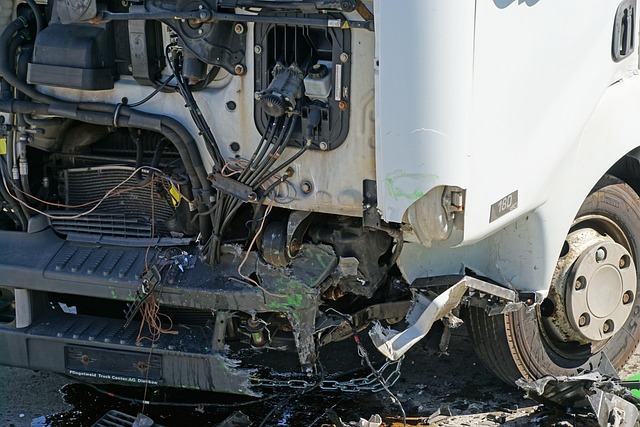General Liability (GL) insurance is a vital risk management tool for businesses, offering comprehensive protection against potential legal expenses, personal injury/property damage, and medical cost coverage. This policy consists of three main parts: Bodily Injury, Property Damage, and Personal & Advertising Injury. GL coverage shields businesses from diverse risks, including customer injuries, property damage, and contractual disputes. It covers legal fees, settlement costs, and damages without disrupting financial health. Selecting a reputable provider is crucial, focusing on policy terms, coverage limits, and exclusions tailored to specific business needs. Effective claims handling process includes investigation, negotiation, mediation, and litigation, ensuring businesses stay protected against unforeseen events. Case studies highlight the importance of full-service GL coverage in managing incidents like slip-and-falls and data breaches without substantial financial burdens.
“Unsure about the importance of General Liability (GL) insurance for your business? This comprehensive guide unravels the intricacies of full-service GL coverage, offering a 360-degree view of protection against common liabilities. From understanding key policy components to identifying businesses in need of this safeguard, we delve into real-world applications and best practices. Learn about potential exclusions, selection criteria, claims handling, and more, ensuring you’re armed with knowledge to make informed decisions regarding your business’s liability management.”
Understanding Full-Service General Liability Coverage: A Comprehensive Overview

Full-Service General Liability Coverage offers businesses a comprehensive protection against a wide range of potential risks and liabilities. It goes beyond traditional liability insurance by encompassing various aspects crucial for business continuity. This coverage includes legal expenses, damages for personal injury or property damage, and even medical costs incurred due to accidents on premises.
Understanding this type of coverage is essential for businesses as it provides a safety net against unforeseen events. By offering a full suite of services, General Liability Coverage enables companies to focus on their core operations while mitigating risks effectively. It ensures that in the event of a claim or lawsuit, the business has access to legal support and financial protection, ultimately safeguarding its reputation and stability.
Key Components of a General Liability Policy

A comprehensive General Liability policy is a crucial tool for businesses, offering protection against potential risks and claims. The policy’s key components include three main coverage parts: bodily injury liability, property damage liability, and personal and advertising injury liability. Each part caters to distinct types of losses and damages that businesses might encounter.
Bodily injury liability covers medical expenses and other losses incurred by third parties who sustain injuries on your premises or due to your products or services. Property damage liability shields against claims for theft, destruction, or loss of physical property, ensuring you’re compensated for these unforeseen incidents. Personal and advertising injury liability, meanwhile, addresses issues like false arrest, slander, or intellectual property infringement, providing a safety net for legal disputes arising from your business activities.
Who Needs General Liability Insurance?

Everyone from small businesses to large corporations needs some form of protection against potential liabilities. General Liability Insurance is a crucial component for any entity that interacts with customers, clients, or third parties. Whether you run a retail store, offer professional services, or manage a restaurant, there’s always a risk of claims related to property damage, personal injury, or other incidents on your premises.
General Liability Coverage steps in to shield businesses from these financial burdens by providing compensation for legal fees and damages awarded in lawsuits. It’s not just about protecting your assets; it also helps maintain peace of mind, ensuring that unexpected events don’t cripple your operations or leave you with overwhelming debt.
Types of Businesses Requiring This Protection

Many businesses, regardless of size or industry, can benefit from full-service general liability coverage. This type of insurance is particularly essential for operations that involve potential risks and interactions with third parties. For instance, retail stores face liabilities related to customer injuries on their premises, while service-based businesses like restaurants, salons, and fitness centers must account for food safety, slip-and-fall incidents, or personal property loss.
Construction sites and companies offering professional services such as consulting, legal aid, or medical practices also require robust general liability protection. These businesses often face claims related to property damage, bodily injury, or contractual disputes. Full-service general liability coverage provides a comprehensive shield against these risks, offering peace of mind and financial security for business owners.
The Role of Liability in Business Operations

Liability is an inherent part of any business operation, acting as a safety net that protects against potential risks and financial losses. It’s crucial for businesses to understand their exposure to various liabilities, such as accidents, property damage, or personal injury claims. General Liability (GL) insurance serves as a critical component in managing these risks, offering financial protection against covered claims.
By securing comprehensive GL coverage, businesses can ensure they’re prepared for unforeseen circumstances that may arise during day-to-day operations. This includes incidents like customer slips and falls on premises, product liability issues, or even legal disputes resulting from alleged negligence. Such coverage enables businesses to maintain stability, covering legal fees, settlement costs, and damages without disrupting their financial health.
Common Exclusions and Limitations to Be Aware Of

General Liability insurance provides a safety net for businesses against claims of bodily injury or property damage, but it’s not without exclusions and limitations. Some common exclusions to be aware of include damages arising from intentional acts, war, nuclear hazards, and pollution-related liabilities. These exclusions vary across policies, so it’s crucial to read the fine print carefully.
Additionally, there may be limitations on the amount of coverage available for a single incident or over the policy period. The policyholder’s own negligence can also impact claims, with some policies excluding coverage for damages caused by a business’s own carelessness. Understanding these exclusions and limitations is essential in managing risk effectively under a General Liability policy.
How to Choose the Right General Liability Provider

Choosing the right General Liability provider is a crucial step in ensuring adequate protection for your business. Start by evaluating potential providers based on their financial stability and market reputation. Reputable insurers with strong financial backing offer greater assurance of claims coverage and long-term reliability. Check industry reports and ratings from independent agencies to gauge their solvency and customer satisfaction levels.
Next, analyze the policy details, considering the scope of coverage, limits, exclusions, and conditions. Ensure the provider offers comprehensive general liability protection that aligns with your business activities and potential risks. Compare policies to find one that balances cost-effectiveness with robust coverage, allowing for peace of mind and effective risk management.
Claims Handling and Resolution Process

When it comes to General Liability Coverage, one of the key aspects that sets policies apart is how they handle and resolve claims. The process typically begins when a claimant files a notice of liability, outlining their alleged injuries or damages caused by the insured party. This notification triggers an investigation, where the insurance provider assesses the validity and scope of the claim.
The insurer then negotiates with the claimant to reach a settlement. This may involve mediation or arbitration to facilitate a mutually agreeable outcome. If a resolution isn’t reached, the case progresses to litigation, where both parties present their evidence in court. The judge or jury then determines liability and awards damages, which the insurance company is responsible for covering, up to the limits specified in the policy.
Case Studies: Real-World Applications of Full-Service GL Coverage

Full-service general liability coverage plays a pivotal role in safeguarding businesses against unforeseen risks and legal liabilities. To illustrate its practical application, let’s consider two case studies. In one instance, a small retail store faced a slip-and-fall incident where a customer injured their knee on a poorly maintained floor. Thanks to comprehensive general liability insurance, the store was able to cover medical expenses and settlement costs without incurring significant financial strain. This real-world scenario underscores the critical importance of full-service GL coverage in protecting businesses from unexpected incidents that can disrupt operations and damage reputations.
Another case involves a technology startup that inadvertently exposed sensitive customer data due to a security breach. The resulting legal action led to substantial fines and compensation for affected individuals. However, because the startup had opted for a robust full-service general liability policy, they were able to navigate this crisis more smoothly, covering the settlement costs and leveraging legal support provided by the insurance company to mitigate future risks. These examples highlight how effective GL coverage can serve as a shield against not only physical harm but also data breaches and other cyber liabilities.
